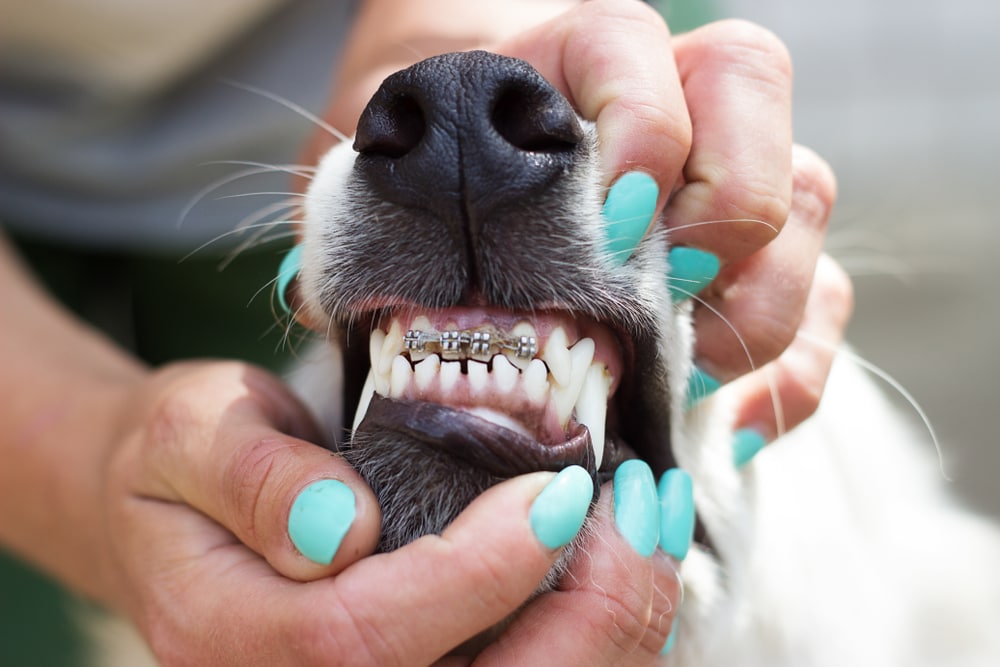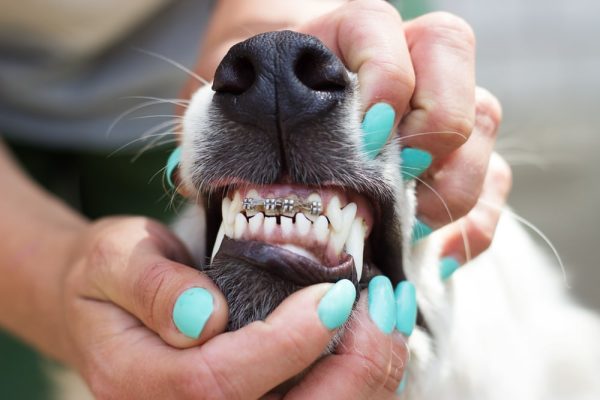We are here to discuss braces for a dog’s teeth. Braces are not just for people! But getting ones for a dog is purely for health purposes, not cosmetic reasons.
If you believe that your dog is a candidate for braces but are wondering how much they’ll cost and what dental conditions make braces necessary, we are here to answer your questions.
The Importance of the Health of Your Dog’s Teeth
It can be disastrous for a dog to have problems with their teeth. Lacking the ability to eat their food properly or having canine teeth poking into soft gum tissue are reasons that fixing teeth issues is vital.
- Teeth misalignment: This can include an overbite, underbite, level or even bite, open bite (the front teeth don’t line up when the dog’s mouth is closed), and crossbite.
- Linguoversion: One or both canine teeth on the lower jaw come out on the inside. This is common in breeds like Collies because of their long and narrow muzzle.
- Lance or spear tooth: One or both upper canine teeth come out in an abnormal position behind the upper incisor.
- Retained baby teeth: This happens in dogs that have all their adult teeth but still have a retained baby tooth, which can cause overcrowding, periodontal disease, and bite issues.
- After surgery: If a dog loses part of their jaw in surgery (like for cancer), braces can prevent the remaining teeth from drifting into different positions.
Most of these problems might need tooth extractions or surgery, but braces could do the trick.

How Much Do Braces Cost?
The cost of dog braces depends on a few factors, which include what the dental problem is, the size of your dog, and how long the braces need to stay on. The price will also depend on the veterinary clinic and your location.
Generally speaking, dog braces could range anywhere from $1,500 to $5,000.
The price of the braces is fairly costly, and there are other expenses that you need to be prepared for.
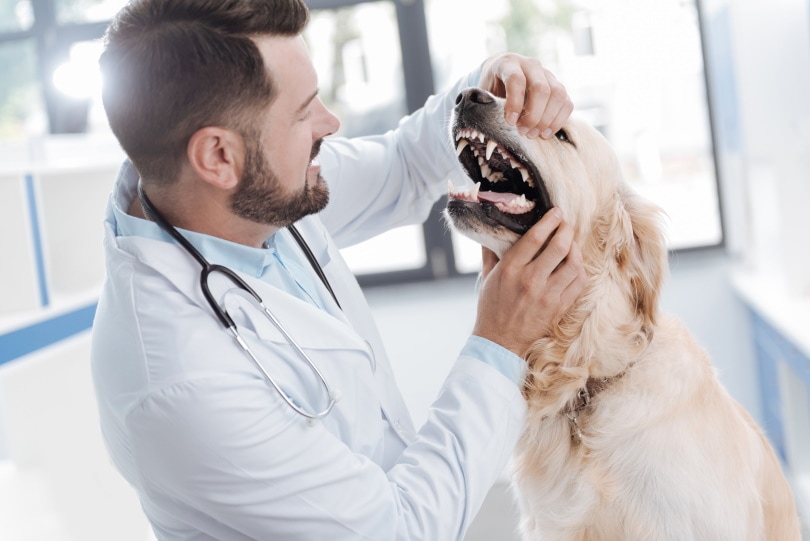
Additional Costs to Anticipate
Beyond the braces, there are additional costs. First, there’s the usual consultation fee that you might need to pay, though some clinics might incorporate this into the entire bill.
Second, your vet will need to take an X-ray (also called a radiograph) of your dog’s mouth before putting in the braces. The price for this might be about $75 to $150, and there could be an additional fee if the vet needs to take extra X-rays.
There will also be multiple visits to the clinic over the period that your dog is wearing the braces. This could turn out to be weekly or every other week.
Finally, you’ll need to pay an extra charge for anesthesia. Your dog will need to be sedated during the procedure of having braces placed on their teeth. Your vet will also do a thorough cleaning of your dog’s teeth before putting on the braces, while your dog is under anesthesia.
How Do You Take Care of a Dog With Braces?
You should be cleaning your dog’s teeth regularly to keep your dog healthy throughout their life. But with braces, this is a definite requirement—every day is best. Your veterinarian will likely give you an oral antiseptic that you’ll need to apply, and you should be carefully checking your dog’s teeth and braces daily.
Also, your vet will probably instruct you to only feed your dog soft foods while the braces are on, and you’ll need to avoid any bones or chew toys. Anything hard and crunchy could potentially break off the braces.
The good news here is that dogs don’t need to wear braces for nearly as long as we do. We humans typically wear braces for years, but dogs only need to wear the braces for a few weeks or up to a couple of months.
Plus, while we tend to need retainers after our braces are removed, this isn’t necessary for dogs.
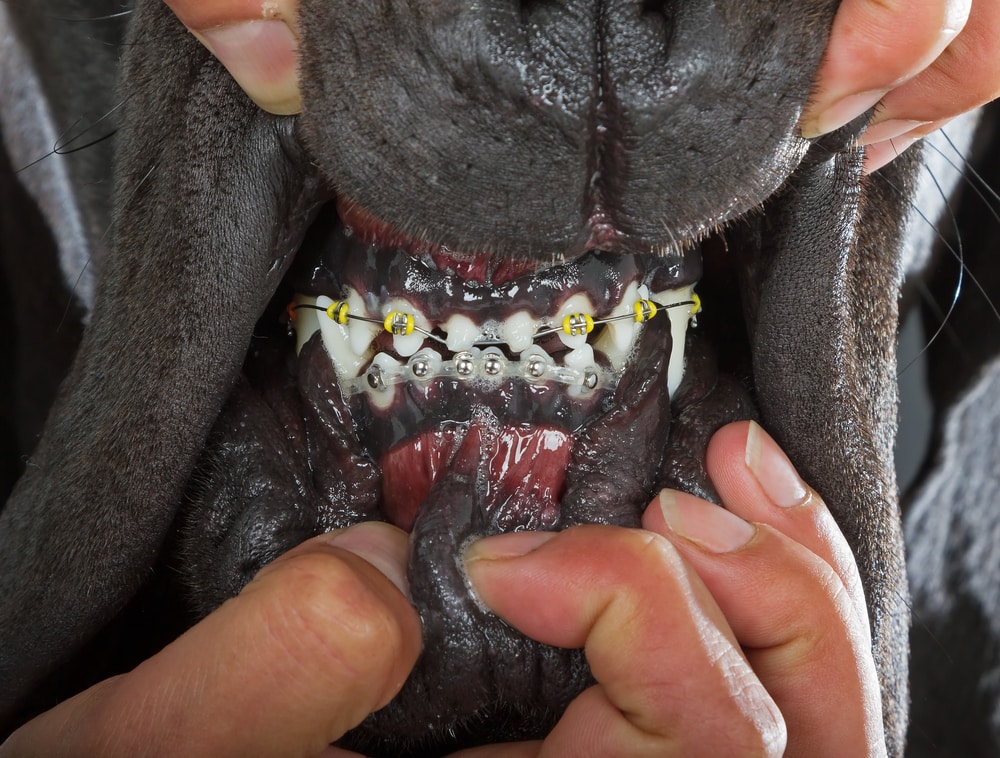
Does Pet Insurance Cover Braces?
Pet insurance won’t entirely cover the cost of braces, but it should cover a big chunk of the bill as long as your plan has dental coverage.
Most insurance companies cover up to 90% of your vet bills, but keep in mind that if your dog has a pre-existing condition before you start coverage, anything related to it won’t be covered. This is a good reason that you should begin coverage for your dog when they’re still young and lacking any health issues.
Insurance will also cover any additional costs, like X-rays and anesthesia, but the coverage will just be up to 90%, and that depends on the plan that you’re enrolled in.
How much you pay monthly can range from $10 to $100 but tends to average to around $30 to $50 every month. Unsurprisingly, the more you pay every month, the better the coverage, so it depends on your budget. Additionally, how much you pay will depend on your dog’s sex, size, breed, and age. Most insurance companies will reimburse you after you’ve paid the clinic and have sent them the bill and your dog’s records.
Look at the insurance companies out there, and be sure to read reviews and all the fine print, and you should find the right plan for you and your dog.

How Can I Tell If My Dog Might Need Braces?
There are several indicators that a dog might need braces or that there might be something wrong with their teeth.
If your dog seems to be dropping food often or appears to be shy when that wasn’t an issue before, these could be potential signs. Or, if you notice that your dog has an overbite or you observe any changes to their teeth, it’s always best to meet with your vet.
By the time your dog is about 6 months old, all their puppy teeth should have fallen out, and they should have a mouth full of adult teeth. This is a good time to keep an eye on your dog’s teeth (which you can do while brushing their teeth) for any problems.
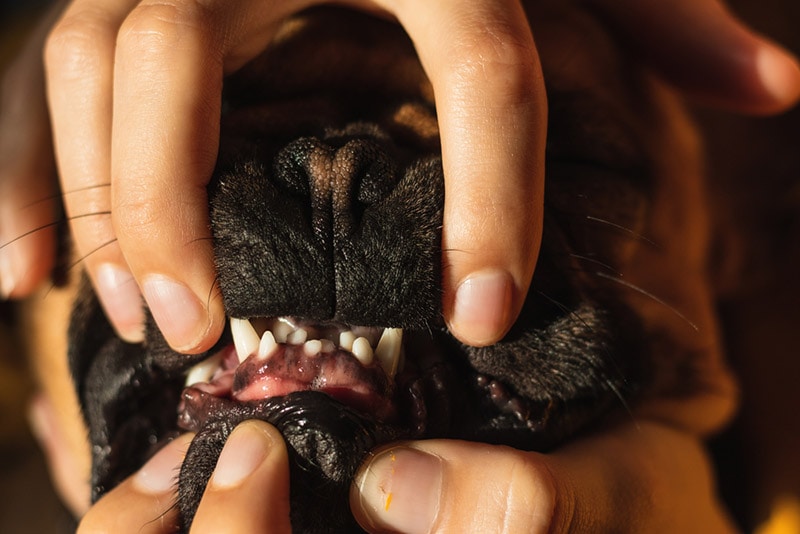
Are There Any Options Besides Braces?
There are a few different options available for teeth issues because braces are not always necessary for every dog.
There’s a ball that you encourage your dog to carry around in their mouth. The ball is typically rubber and should fit in your dog’s mouth in just the right way to exert gentle pressure on the teeth. This should help slowly reposition the tooth or teeth into the correct position.
Sometimes, the vet might just extract or file down problem-causing teeth. However, this isn’t always the best option because while it’s cheaper, it is also sometimes only a temporary fix.
Conclusion
Braces are not for every dog. In some cases, you can use alternative treatments to fix dental problems, but some teeth issues can cause a dog to suffer a great deal of pain and could lead to them losing an unhealthy amount of weight.
If you have pet insurance, braces can be affordable. Just make sure your plan has dental coverage.
It’s likely that you’ll end up with a few friends and family members chuckling at your dog running around with braces. Just tell them that while it might look kind of weird, it’s to help your dog with a serious health condition. We want our dogs to be comfortable, happy, and in excellent health!
See also:
Featured Image Credit: Yavdat, Shutterstock

